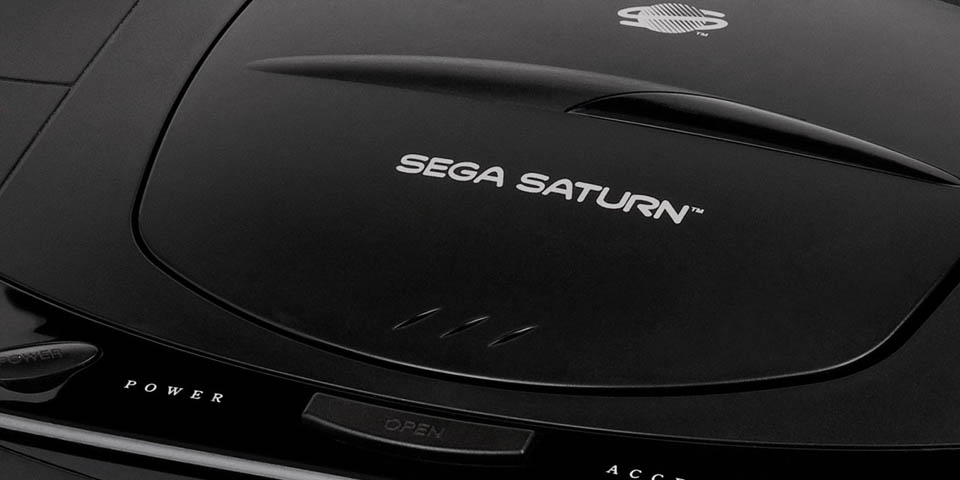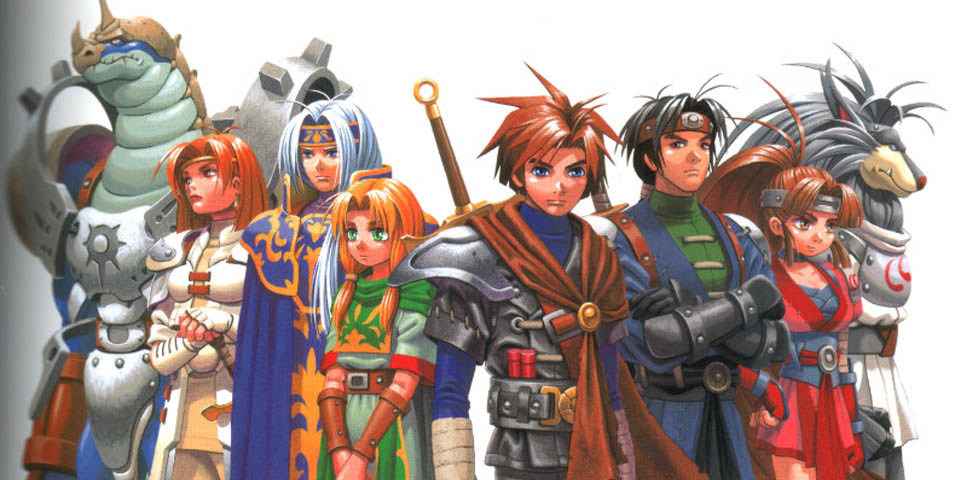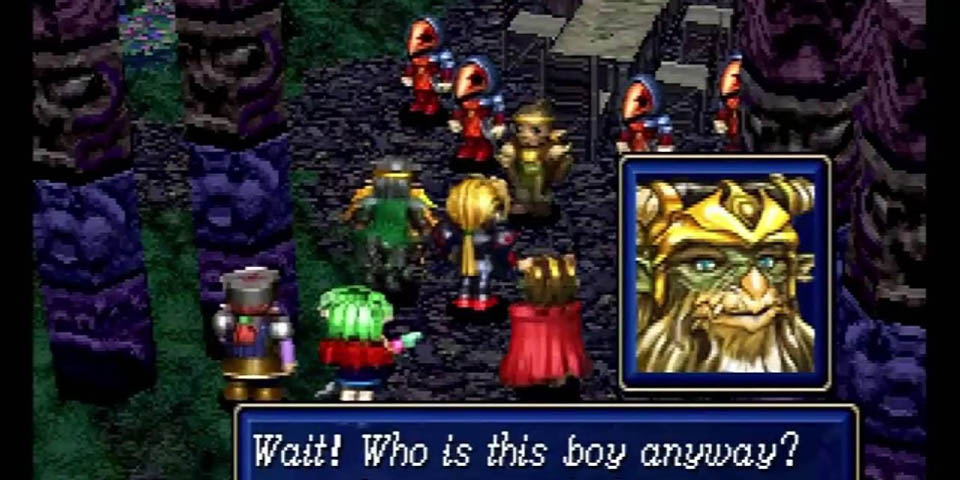From its obscure origins, becoming first known to western audiences through Super Smash Bros. Melee, Fire Emblem has gone from a niche to a genuine tentpole series for Nintendo, the epic Three Houses on Switch becoming its all-time crowning success. With its first anniversary not long gone, I had planned to revisit it as there was still one of the narrative paths I had yet to complete. Instead, I’ve found myself sidetracked by another tactical RPG, one that’s been close to my heart since long before I awakened to Intelligent Games’ series.
As I’ve written on TheSixthAxis before, I grew up as a Sega fanboy, and back then Sega had two major RPG series: Phantasy Star and Shining Force. The first one had passed me by until its online iteration on the Dreamcast, but for all intents and purposes, Shining Force on Mega Drive introduced me to RPGs. Developed by Camelot Software Planning (formerly known as Sonic! Software Planning), it was actually different from the other dungeon-crawling random battling RPGs like Dragon Quest and Final Fantasy, belonging in the sub-genre of the tactical RPG more akin to table-top RPGs – or a fancier-looking Chess.
As the hero, you didn’t start off very powerful but you instead had command over a growing battalion of troops who cut the stock fantasy types, from your tough centaur knight to physically weak but powerful mages, archers for ranged attacks, and so forth. With battles taking place over a map made up of square grids, you move your units, trying to best position yourself to attack, cast spells or sometimes avoid/bait the enemy.
Objectively, Shining Force was a simpler tactics game compared to Fire Emblem since your units only attacked during their turn; it also lacked a defined weapon triangle or support system. In any case, I couldn’t compare at the time since a Fire Emblem game was only localised for the first time for Game Boy Advance in 2003. It didn’t matter because I was simply absorbed by its fantasy trappings and engrossed with taking my time to pull off the perfect strategy. Considering Shining Force is included in the Mega Drive Classics collections, as well as in the Mega Drive Mini’s library, its legacy hasn’t been lost on Sega either.
However, it was Shining Force III on the Saturn that was the real revelation for me. Admittedly, the world was taken by Final Fantasy VII by this point, but I loved Shining Force III’s turn-based tactical gameplay and its steadfast approach to generating its sprites and 3D models in real-time instead of relying on pre-rendered backgrounds and CGI.
It was also a boldly ambitious game, or rather a trilogy of games. Preceding the three-way narratives of Fire Emblem: Fates and Fire Emblem: Three Houses, Shining Force III split its story into three scenarios following the journey of three heroes whose fates are intertwined in a geopolitical conflict and conspiracy ultimately tied to a darker force. These aren’t like the ‘what if’ scenarios of Three Houses, where one narrative choice would contradict another, rather they complement each other to build a full epic.
It’s a fascinating approach as when you play as Synbios from the Aspinian Republic, you’ll occasionally cross paths with Prince Medion from the Destonian Empire, hearing how they’ve come to your aid despite you being on opposite sides of a conflict (though it turns out both the Republic and the Empire have their own problems from within), while the game takes an amusing choice to limit your protagonist’s dialogue to ellipsis. Certain actions from one party can also have an impact on the other, such as whether you manage to save the archer Garosh who then goes on to join Medion’s party in his campaign.
Sadly, this level of sophistication was something western players never got to experience. The PAL version of Shining Force III was released in June 1998 when the Saturn was basically on its last legs. This disc was just the first scenario, the game’s cliffhanger between Synbios and Medion’s forces purposely re-contextualised in the translation to try to give it some kind of closure. Not that you could fool the die-hard Saturn loyalists, seeing as the UK’s Sega Saturn Magazine ran an import preview of the second scenario in the same issue as their review of the PAL release.
By this point I had grown used to seeing pages of delightful import oddities (and well, some pretty pervy stuff too) on those pages, but I was desperate to find out what had happened in Medion’s story and was sorely disappointed that, despite owning a chipped machine, there’d still be a huge language barrier preventing me from seeing the saga through to its end.
So imagine my delight when I recently discovered that fans had come together to resolve this. Beginning back in 2005, a software programmer going by Knight 0f Dragon developed the software that allowed Japanese text in a game to be replaced with English text. By 2006, the fan community at Shining Force Central, led by Steve Simmons (going by “legalize freedom!”), began the monumental task of translating and patching the entire trilogy so that it could finally be played in English in full.
The translation is still continuing to evolve, with a patch V21 in progress as recent as July 2020, but having just fallen down the emulation rabbit hole and revisiting lost classics, I was happy enough to come across a folder of the whole trilogy with the V20 translation already patched in and finally got to continue the story over two decades later.
After all that time I had to replay the first scenario again just to refresh my memory, and I immediately fell back in love with the sprites, the music and the tactical battles, even if they do feel limited compared to a modern Fire Emblem. I’m now finally playing the second scenario and seeing things from Medion’s perspective, how this prince is actually the underdog of the Empire, being half-commoner. I get to see how his party foiled other enemies trying to ambush the Synbios army which you only heard reports of in the first scenario. I also get to find out just what happened to redheaded mercenary Julian, who was presumed dead when he was thrown off a cliff by the big bad Galm – by the third scenario, it also becomes apparent that Julian is the game’s true protagonist.
I couldn’t be more grateful for this community and the years of hard work they’ve put in to make a lost classic like this accessible to other English-speaking fans. They’re not alone in this effort since other Japan-exclusive RPGs like Sakura Wars and Mother 3 have lived on solely through fan translations too. There’s obviously a murky legal area on downloading ROMs however, but what’s a person to do when the original games cost a few hundred quid a piece on eBay and you can’t even play two-thirds of them in English?
The obvious solution of course would be for Sega to get off their butts and localise the whole trilogy with a remastered collection, something I’ve been banging the drum for since the Dreamcast years. It’s not a completely impossible scenario. After all, Nintendo localised the original Mother game for Wii U’s Virtual Console (renamed Earthbound Beginnings) and last year we saw Square Enix finally localise Seiken Densetsu 3 as part of its Collection of Mana package, both of these games considerably older than Shining Force III. Sega has also been hard at work pumping out its back catalogue on Switch with its Sega Ages collection, and while most of these are arcade titles, they do include the original Phantasy Star as well as the first two Puyo Puyo titles, previously exclusive to Japan.
The thornier issue is whether or not Sega actually wants to. I don’t doubt there’s a lot of work involved with localising the trilogy, let alone one not known to many people and doesn’t share the same ‘beloved’ status as say Final Fantasy. There may also be a conflict with the direction of the Shining series itself, which hasn’t had a tactical turn-based entry since 2009’s Shining Force Feather, released on the DS only in Japan. It’s also not a good sign when the Shining Force Central community also claimed back in 2016 that their Twitter was blocked by the official Shining account for unknown reasons.
But when Fire Emblem is showing how a formerly niche genre can turn into a blockbuster franchise, surely there couldn’t be a better time for a long-awaited Shining Force revival from Sega? I could carry on waiting but right now, I’ll take my hat off to the passionate community of translators and hackers for making my dream come true.










